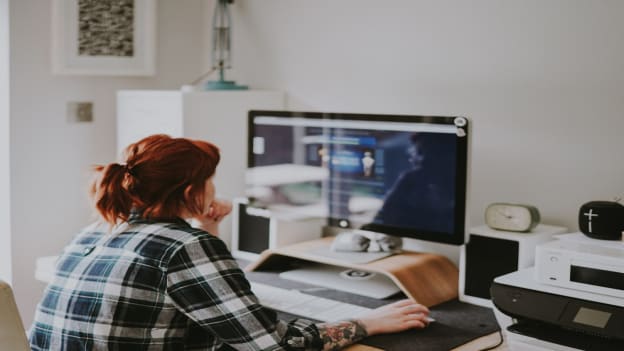How to combat ‘screen apnea’

Imagine juggling ten different screens, receiving texts, calls, and emails simultaneously. This constant state of stimulation is not in harmony with our evolutionary history, according to the experts.
Screen apnea, also known as email apnea, is a condition that affects many of us in our increasingly screen-driven lives. It's the unintentional interruption or change in breathing patterns that occurs when we're engrossed in tasks on our screens. This phenomenon was first identified by Linda Stone, a former Microsoft executive, who noticed that even though she practiced breathing exercises every morning, her breathing would become shallow and barely detectable when she sat down to check her email.
Stone conducted a study involving 200 participants, and approximately 80 percent of them exhibited altered breathing patterns while checking their email. This led to the coining of the term "email apnea." The issue has become more prevalent in today's world of constant digital stimulation, where multiple screens and notifications demand our attention.
Screen apnea is a manifestation of our body's stress response. When we encounter stimuli on our screens, our nervous system assesses them for potential threats, diverting resources and attention away from our regular breathing patterns. This can lead to shallower breathing and a slower heart rate as the body prepares to focus.
While these reflexes can be beneficial in moderation, they become problematic when they persist throughout the day, putting the nervous system in a chronic state of threat. Prolonged shallow breathing can lead to feelings of exhaustion, even in the absence of significant stress.
Read: Should you strive for work-life balance or work-life fusion?
Sitting in front of screens for extended periods may exacerbate screen apnoea. Poor posture and a lack of movement contribute to disrupted breathing patterns. Dr. David Spiegel, from Stanford Medicine, observed screen apnea in patients with high-stress jobs who spent long hours in front of screens without adequate exercise or sleep.
To combat screen apnea and promote better breathing habits in our digital lives, consider these practical tips:
Set up breath reminders: Set gentle alerts throughout the day to remind yourself to check your breathing. Pay attention to whether you're breathing through your mouth, an indicator of shallow breath, or if you're not breathing at all. Awareness helps break the pattern.
Try larger screens: Opt for larger screens when possible. A bigger visual field can be less mentally taxing and reduce the strain on your nervous system.
Make your breaks count: When taking breaks, engage in activities that require minimal mental effort, like listening to music or walking in nature. Physical activity during breaks can also help restore balance in your breathing and overall well-being.
Read: Crafting a vacation policy that will attract and retain talent
Additionally, practicing deep breathing exercises can help reverse the effects of screen apnea. Slow, extended exhales can lower breath rates, reduce anxiety, and calm the mind. Incorporate these exercises into your daily routine to improve your awareness of your breathing patterns and ease stress.
By being mindful of your breathing and implementing these strategies, you can break the cycle of screen apnea and enhance your overall well-being in our screen-dominated world. Don't let your screens control your breath; take charge and breathe better at work.
















